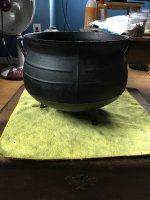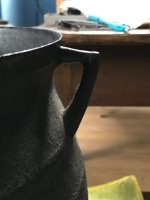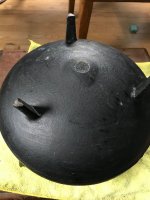John Boger
New member
Cast iron is not my primary focus although I appreciate the beauty of much of it. Over the years I've owned several kettles. Only one so far had a sprue and not a gate mark. Now I might have a second, but I'd like to have a more experienced person (or persons) tell me if that's true or not. I've attached three photos.
If the kettle does have a sprue, approximately when would this kettle have been made? And if it is not a sprue, same question.
John
If the kettle does have a sprue, approximately when would this kettle have been made? And if it is not a sprue, same question.
John



